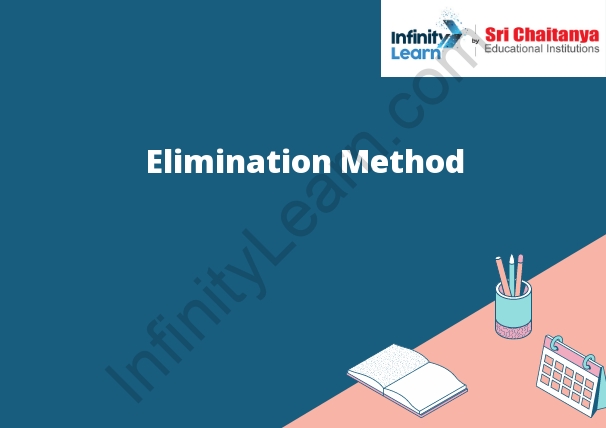Table of Contents
An Introduction to Elimination Method
The elimination method is a technique used to solve systems of linear equations. The method can be used to solve systems of equations in two or three variables.
The elimination method works by solving one equation for one of the variables and then using that equation to solve the other equations in the system.
To solve a system of equations using the elimination method, we first need to rewrite the system so that all of the equations are in standard form.
In standard form, each equation in the system has the same coefficient of the variable we are solving for, and the variable is on one side of the equation.
Once the equations are in standard form, we can solve them one at a time. We start by solving the equation with the smallest coefficient.
We then use that equation to solve the other equations in the system.
The elimination method can be used to solve systems of equations in two or three variables.
In two variables, the method can be used to solve systems of equations that are in either row-echelon form or reduced row-echelon form.
In three variables, the method can be used to solve systems of equations that are in either standard form or reduced standard form.

Solving a Set of Linear Equations by the Elimination Method
The elimination method for solving a set of linear equations is a process of systematically eliminating one variable from the set of equations by substituting the value of that variable into one of the equations. The process is repeated until only one equation remains, and the value of the variable in that equation can be solved to determine the value of all of the other variables in the set of equations.
The elimination method can be used to solve a set of linear equations that are either consistent or inconsistent. A set of equations is consistent if the variables in the equations can be assigned values that result in all of the equations being true. A set of equations is inconsistent if the variables in the equations cannot be assigned values that result in all of the equations being true.
The steps for solving a set of linear equations by the elimination method are as follows:
1. Assign a value to one of the variables in the set of equations.
2. Substitute the value of the variable into one of the equations.
3. Solve the equation for the variable.
4. Repeat the steps until all of the variables have been assigned values.
5. The value of the variable that remains in the last equation is the value of all of the other variables in the set of equations.
Steps for Solving Equations through the Elimination Method
The steps for solving equations through the elimination method are as follows:
1. Determine which equation to solve first.
2. Solve the first equation for one of the variables.
3. Substitute the solved equation into the second equation and solve for the other variable.
4. Check the solution by plugging it back into both equations.
5. If the solution is correct, then the equations are consistent and the solution is the unique solution.
6. If the solution is not correct, then the equations are inconsistent and there is no solution.
To Make it Simpler for You, Consider the Following Example
Let us take the example of a person named John. John has a job, a family, and bills to pay. John has a limited amount of money each month to spend on food, bills, and other expenses. John needs to budget his money to make sure he has enough to cover all of his expenses.
One way for John to budget his money is to create a budget spreadsheet. In his budget spreadsheet, John can list his monthly expenses and how much money he has to spend on each expense. This will help John stay on track and make sure he has enough money to cover all of his expenses.
Elimination Method Examples
To calculate a value using the elimination method, one begins by solving for one variable in the equation and then substituting that value into the other equation.
For example, consider the equation \(x + 2y = 5\).
To solve for x, one would solve for y in the equation and then substitute that value into the equation for x.
In this equation, y = 3.
Therefore, x = 5 – 2(3) = 1.
How to Solve Word Problems with the Elimination Method?
To solve a word problem using the elimination method, you must first identify and list the variables in the problem. Next, you must identify and list the known facts. Finally, you must use the algebraic equations to solve for the unknowns.








